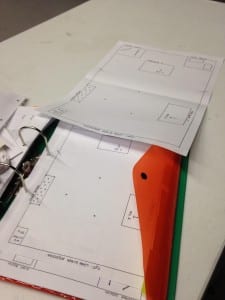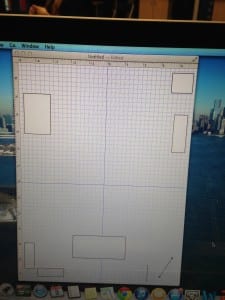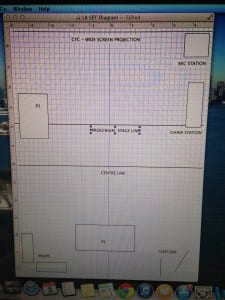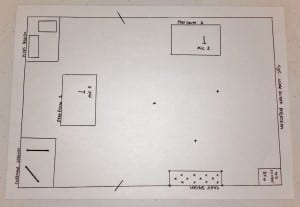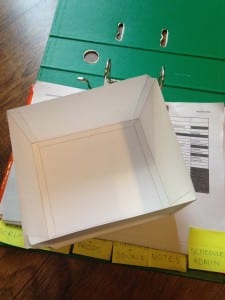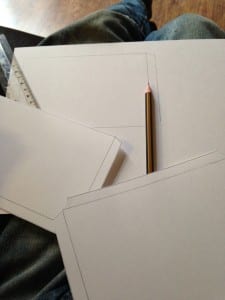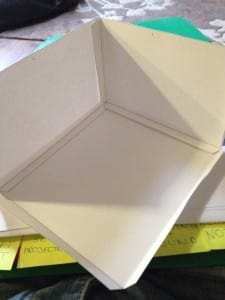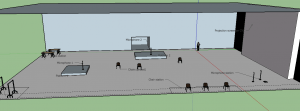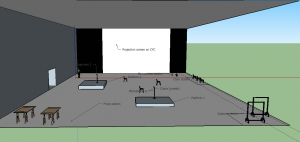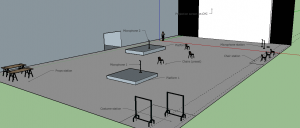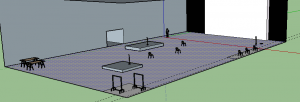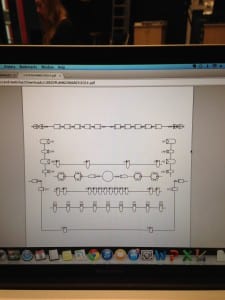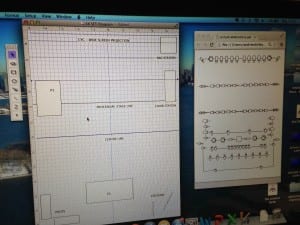These past weeks have included decisions regarding the general aesthetic for the piece, now named Take Me By The Tongue.
Discussions and meetings have been arranged to ensure that all members of the creative seem were aware of the overall vision and aesthetic of the show. Our creative team is as follows:
- Producer: Lizzy Hayes
- Director: Stephanie Alcock
- Production Manager/Lighting Designer: Andrew Tinley
- DSM/Set Designer: Libby Soper
John Caird in Theatre Craft states that the aesthetic elements of a show such as costume, props, lighting and set need to create a ‘unified world’, ‘if you oblige the costume designer to work in a void, the costumes will always look more like costumes and less like clothes’ (Caird, 2010). He continues ‘similarly with the lighting designer. Share your design ideas as soon as you can so [they] can start designing a rig that will complement the set, technically and artistically’ (Caird, 2010). These creative components have had supervision and will continue to be assessed to ensure that this ‘unified’ world is created. The set and set properties were confirmed this week and so enabled the lighting design process to begin.
Set Design
(Pictures of set design from top (l) basic LX FREE set design (c) LX FREE set design with labels (r) (Completed by Andrew Tinley and Libby Soper) – Picture taken by Andrew Tinley, March 2014) – Far right image was completed and taken by Libby Soper.
This promenade staging will consist of two platforms and various stations outlined above. These will be incorporated within the performance and perhaps be performed on simultaneously so that various immersive atmospheres can be created throughout the show. Several sheets of this design have been printed so that during the rehearsal process the stage management team can outline prop, costume and blocking movements between actors and scenes throughout the show. Once this is completed a ‘properties movement’ document will be created in order to ensure that props and costumes (seeing as though they are on visible when not in use) are correctly placed and pre set in order for the show run smoothly.
(Picture of card mock up Set Design (Completed by Andrew Tinley) – Picture taken by Andrew Tinley, March 2014)
Card and electronic prototypes were created to ensure that the set was could be visualised by all members of the creative team and once confirmed, the actors. Having a visualisation of the set is crucial in ensuring that all team members understand how the production elements of the show are coming together and how they are going to become a part of the final piece.
(Electronic set prototypes made on SketchUp3D (completed by Andrew Tinley) – Picture taken by Andrew Tinley, March 2014)
Set Management (this is document created to ensure that all aspects of the set were managed in terms of their budget and location)
Lighting Design
The piece consists of various different locations. These have been written down in order for the lighting design plot to begin. Once the set was confirmed this week, more confirmed ideas and research in to specific lighting design began. Due to this performance being promenade, lights will have to be rigged carefully in order for actors to be seen from all angles, as audience movement could be unpredictable. Our director, Stephanie, will ensure that the spectators travel on a journey through the space during the performance and so discussions with her will be scheduled to ensure that the lights are correctly planned. These uncertainties will be assessed throughout the process (and limited to a certain extent) to ensure that the correct aesthetic is created.
(LPAC LX plan (l), LPAC LX PLAN and Hand Me Down set design in prep for lighting plan (r) (Completed by Andrew Tinley) – Picture taken by Andrew Tinley, March 2014)
The left image is the LX plan for the Lincoln Performing Arts Centre so that the lighting plan can be made effectively using the resources available. The right image was created through a programme called LX FREE, which is used to create a lighting plan. Set diagrams have been inserted and labelled (above) before the lighting can be designed so that the sheet is clear and can be understood by all creative team members and technicians on the day . This sheet will be used later on in the process to ensure that our technical rehearsals are run as efficiently and effectively as possible.
Keep up to date with my posts to see the lighting and set process as they become more specific….check back soon!
While you’re waiting….feel free to watch this clip about Neil Austin’s experience at the national theatre!
HAND ME DOWN THEATRE FINAL LIGHTING DESIGNS AND CUE SHEETS
Lighting Magic Sheet Lighting Focus Sheet Lighting Ground Plan Lighting Description Sheet LX Set Diagram
Above are the lighting design documents for Hand Me Down Theatre’s production of Take Me By The Tongue. (feel free to have a sneak preview of our company’s vision!)
Work Cited
Craid, J. Theatre Craft (2010)
National Theatre Discover (2011) Becoming a Lighting Designer, [online] Available from: http:// www.youtube.com/watch?v=y_pTBfYyTuc. [Accessed April 2014].

